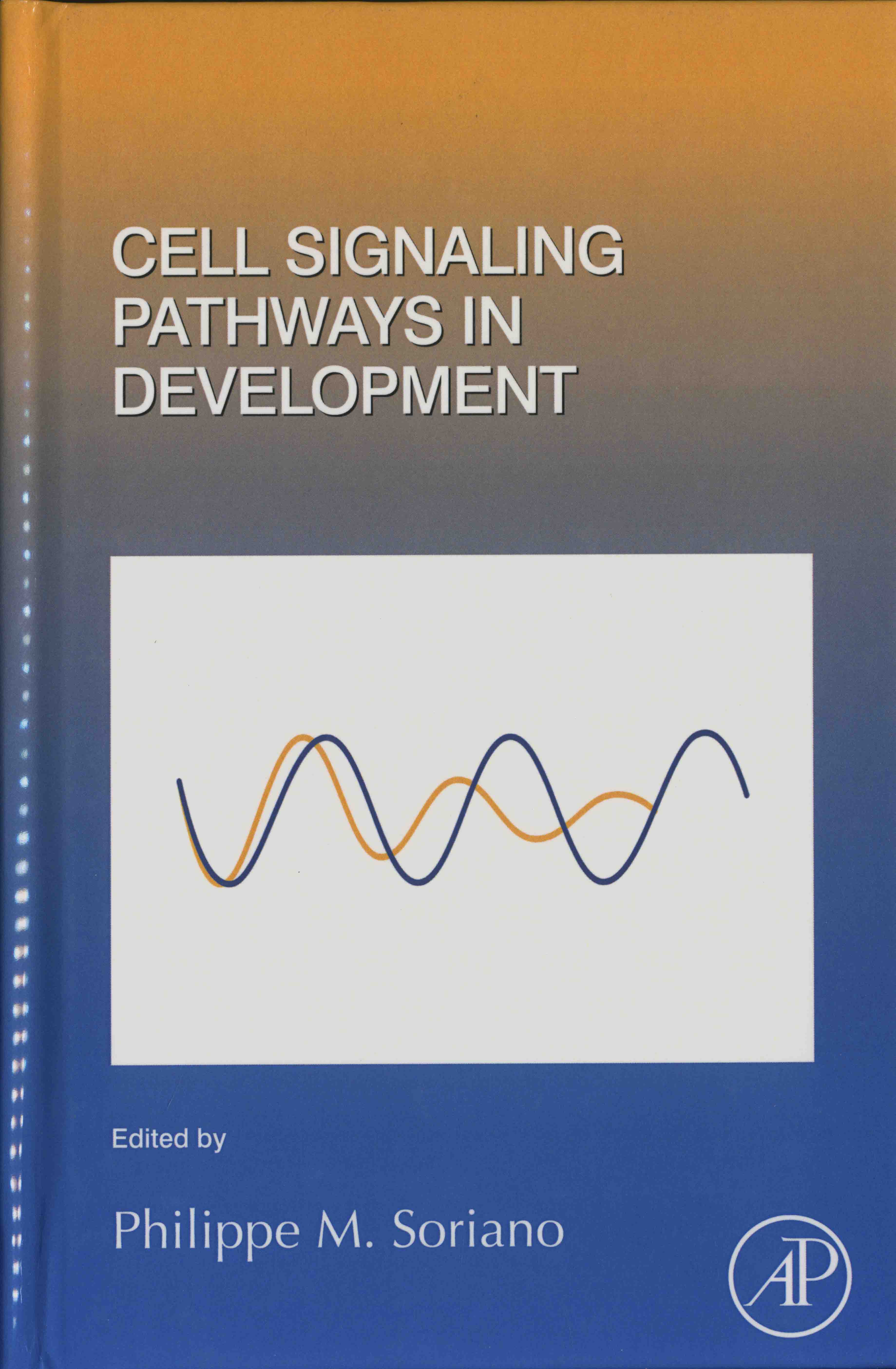 |
Cell signaling pathways in development / edited by Philippe M. Soriano -- Cambridge, MA : Academic Press, an imprint of Elsevier, 2022. – (58.12/C976/v.149) |
Contents
Contributors
Preface
1. Hedgehog signaling
1. Introduction
2. The developmental genetics of Hh signaling in Drosophila
3. The developmental genetics of Hh signaling in vertebrates
4. Multiple protein interactions mediate reception of the Hh signal
5. Structure and biosynthesis of Hh proteins
6. Release and movement of Hh proteins from producing cells
7. Reception of HH at the membrane: the role of Patched and Smoothened
8. The intracellular response to Hh
9. Concluding comments
Acknowledgments
References
2. Different strategies by distinct Wnt-signaling pathways in activating a nuclear transcriptional response
1. Overview of Wnt-signaling pathways
2. Induction of nuclear responses downstream of Wnt-signaling
3. How does β-catenin get transported into the nucleus
4. Concluding remarks
Acknowledgments
References
3. Hippo signaling in cardiac fibroblasts during development, tissue repair, and fibrosis
1. Introduction
2. Components of the Hippo pathway and their regulation
3. The contribution of resident CFs to cardiac fibrosis
4. Outstanding questions and future directions
5. Conclusion
Acknowledgments
References
4. Pulling back the curtain: The hidden functions of receptor tyrosine kinases in development
1. Introduction
2. Receptor tyrosine kinase signaling
3. Dismantling RTK signaling one pathway at a time
4. Without canonical signaling, what novel functions are revealed?
5. Conclusion
Acknowledgments
References
5. Cellular and molecular mechanisms of EPH/EPHRIN signaling in evolution and development
1. Introduction
2. EPH/EPHRIN function through an evolutionary lens
3. Cellular mechanisms underlying EPH/EPHRIN-mediated cell sorting and boundary formation
4. Nervous system development
5. Craniofacial and musculoskeletal development
6. Conclusions and perspectives
Acknowledgments
References
6. Integrins, anchors and signal transducers of hematopoietic stem cells during development and in adulthood
1. Integrins
2. A common origin of vascular and hematopoietic cells
3. Involvement of integrins in the establishment of the hematopoietic system
4. Contribution of integrin-mediated adhesion to life-long hematopoiesis
5. Integrin-mediated mechanosensing in the HSPC niche
6. Integrin-mediated support of leukemic stem cells
7. Conclusions
Acknowledgments
References
7. Putting in the Erk: Growth factor signaling and mesoderm morphogenesis
1. Introduction
2. The fates of vertebrate mesodermal populations marked by brachyury
3. FGF expression in the mesoderm: An upstream cue for Erk-dependent gene induction
4. Generation and interpretation of transient Erk signaling in vertebrate mesoderm
5. The role of Erk signaling in initiating and sustaining brachyury expression
6. A role for Erk and a brachyury homology in Drosophila mesoderm specification
7. Moving mesoderm: Erk-dependent control of convergence and extension
8. Erk regulation of epithelial-to-mesenchymal transition in the primitive streak
9. A potential role for Erk signaling in mesodermal directed ceil migration
10. Open questions and new tools for Erk control over mesoderm specification and movement
Acknowledgments
References
8. Establishment and interpretation of NODAL and BMP signaling gradients in early vertebrate development
1. Introduction
2. NODAL signaling
3. BMP signaling
4. Interactions between NODAL and BMP signaling
5. Outlook
Acknowledgments
References
9. Signaling oscillations in embryonic development
1. Introduction
2. Single-cell oscillation dynamics
3. Tissue-wide oscillation dynamics
4. Perspective
Acknowledgments
References
10. Parallels in signaling between development and regeneration in ectodermal organs
1. Introduction
2. From signaling centers during development to stem cell regulated morphogenesis in the adult
3. Shh
4. Wnt
5. Notch
6. Yap/Taz
7. Conclusion--The regenerative properties of the ectoderm
Acknowledgments
References